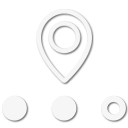Most of the off-the-shelf kits I see are full of stuff you'll never use. My kit was based around a career in construction and a lifetime of being outdoors. Being able to manage a headache, small cuts, and minor stuff in my eye have been 99% of the issues I've faced.
Based on this, I suggest you buy a bag you like and build your own kit. I use an old soft-sided lunchbox with:
· Gauze, scissors, Neosporin, and electrical tape to make custom-sized water-resistant bandages
· Toiletries including bar soap, shampoo, comb, hand sanitizer, toothbrush, toothpaste, mouthwash, deodorant, and wet wipes
· Visine eye drops
· Gorilla Tape for tent repairs, fire starting, and blisters
· Basic meds incuding Ibuprofen (anti-inflamatory), aspirin (heart issues), Benadryl (allergic reactions/sleep aid), Tums, and Immodium
· Neoprene ankle brace, a cloth arm sling, heavy-duty rubber gloves
· DEET bug spray
· Nail clippers, tweezers, a razor blade, and a safety pin
· A small flashlight, a combination pen knife/corkscrew/bottle opener, and a space blanket
Some cheap single-use tubes of super glue would be a nice addition. I have used everything I carry except the space blanket and I can't say I've ever needed anything else. YMMV.








